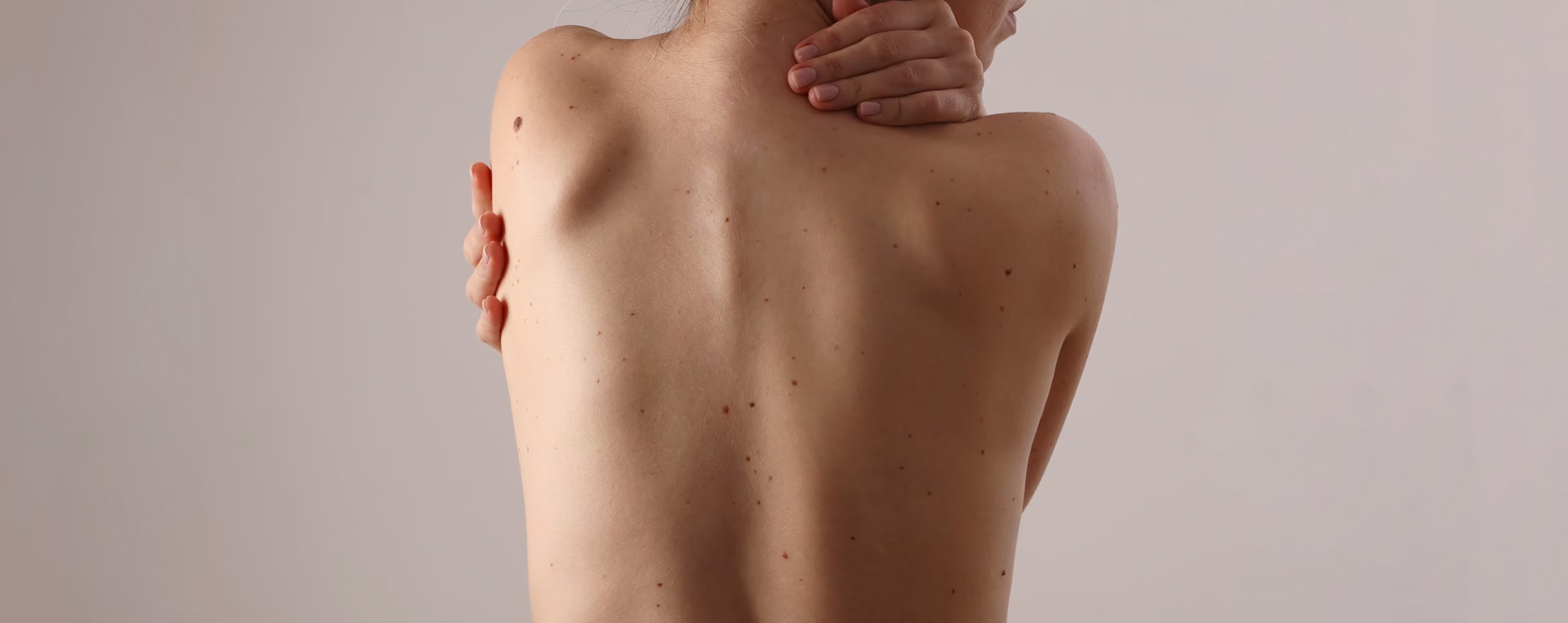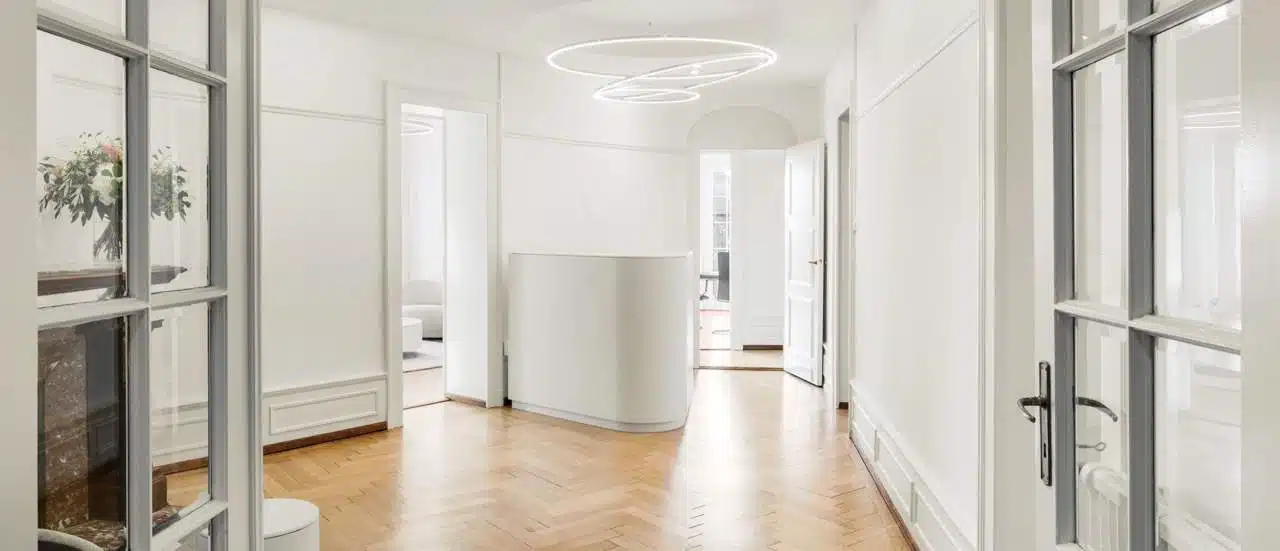
Treatment of moles
We all have at least one mole (called a nevus in Latin) on our bodies. They can be present from birth or even occur during the course of a lifetime. Usually, moles are harmless, but they can change and, in the worst case, lead to skin cancer.
Beauty spot
Anaesthesia
Aftercare
Length
Work
Risks
Sports
How does a Grain de beauté treatment work?
Before the procedure
The patient's health issues are clarified first. The entire skin and moles are examined from head to toe. Exactly which moles are to be removed is discussed and drawn. Together with you, we decide which closure procedure will give you the best possible "aesthetic" result. The decision depends on the age, type, color, quality, area and elasticity of the skin. To avoid jeopardizing the wound healing process after surgical correction, it is generally advisable not to smoke for around 14 days before and after the operation.
During the procedure
The procedure is usually performed under local anaesthetic. The birthmark is excised with as little tissue loss as possible. It is important that the mole is also sufficiently excised deep down to avoid recurrence. The subcutaneous tissue is specially prepared so that we can close the wound with as little tension as possible. At the end of the procedure, we apply special dressings to the wound to ensure that the scar has as little tension as possible.
After the procedure
After excision of the moles, the stitches should be removed within 7 days on the face and 14 to 21 days on the body. During this period, you should refrain from sports for at least 3 weeks. 3 weeks after the operation, you can treat the scar with a special scar ointment, silicone patches and, optionally, compression bandages. You should avoid the sun or use an ointment with a sun protection factor of 50 + for as long as the scar is red.
Risks and side effects
Local swelling and bruising may occur during the first 2 weeks. Infections and hematomas are very rare. Sensory disturbances generally disappear a few weeks after surgery. Pathological scarring, hypertrophic scarring and keloids may occasionally appear.
General information
In Cindy Crawford's case, it has become a personal trademark: a mole on her left cheek. Some moles are present from birth, others appear throughout life. Several factors can influence the presence of a mole over the course of a lifetime: hormonal fluctuations, genetic predisposition, UV radiation and a weakened immune system. If a mole changes in size, shape or color, it may be the first sign of an emerging disease, such as skin cancer. Patients with many naevi are particularly at risk. Benign or malignant - the A-B-C-D-E rule provides an initial assessment:
A Asymmetry: The nevus is irregular, i.e. neither round nor oval.
B Edge: The edge is irregular
C Color: The coloring has changed
D Diameter: greater than 5 mm
E Evolution: The nevus begins to bleed or itch
The removal of a mole may be desired for purely aesthetic or medical reasons. While small moles can usually be easily removed in a few minutes under local anaesthetic, larger birthmarks, particularly on the face, should be excised by an FMH specialist in plastic and aesthetic surgery.
A Asymmetry: The nevus is irregular, i.e. neither round nor oval.
B Edge: The edge is irregular
C Color: The coloring has changed
D Diameter: greater than 5 mm
E Evolution: The nevus begins to bleed or itch
The removal of a mole may be desired for purely aesthetic or medical reasons. While small moles can usually be easily removed in a few minutes under local anaesthetic, larger birthmarks, particularly on the face, should be excised by an FMH specialist in plastic and aesthetic surgery.
Price list
| Actes | Price |
|---|---|
| MOLE – FACE | FROM 600 UNDER AL |
| MOLE – BODY | FROM 400 UNDER AL |
Contact us
Do you have any questions or would you like to make an appointment? You can write us your request via our contact form or call us on +41 21 900 05 09. We look forward to your visit!

